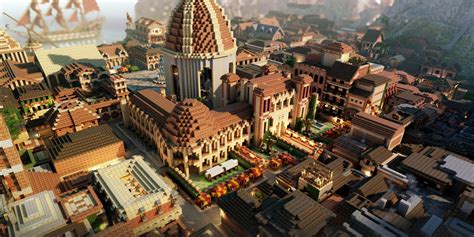Are you a fan of gaming and curious about the intricate process of creating the imaginary worlds we love to immerse ourselves in? Game design is a fascinating combination of art, storytelling, and technology that captivates players and keeps them coming back for more. In this blog post, we’ll take a deep dive into the world of game design, exploring everything from the foundational elements of crafting imaginary worlds to the art of building engaging environments and captivating characters. We’ll also delve into the mechanics of gameplay, from designing innovative challenges and puzzles to integrating audio and visual elements for maximum impact. Join us as we unravel the secrets behind mastering player immersion and emotional impact, and gain insight into the creative process that brings our favorite games to life. Whether you’re an aspiring game designer or simply curious about the magic behind your favorite games, this blog post is sure to pique your interest.
Table of Contents
Understanding the Essence of Game Design
Game design is the art and science of creating interactive experiences for players. It involves the careful consideration of a wide range of elements, including story, characters, environments, mechanics, and audiovisual elements. The essence of game design lies in the ability to blend all of these elements together to create a cohesive and immersive experience for the player.
One of the key aspects of understanding game design is the concept of player agency. This refers to the player’s ability to make meaningful choices that can impact the outcome of the game. By understanding the importance of player agency, game designers can create experiences that are engaging and empowering for the player, leading to a more fulfilling gameplay experience.
Another crucial aspect of game design is the concept of balance. This involves ensuring that the various elements of the game, such as difficulty, pacing, and progression, are finely tuned to create a satisfying experience for the player. Finding the right balance can be a challenging task, but it is essential for creating a game that is both challenging and enjoyable to play.
Ultimately, the essence of game design is about creating experiences that resonate with players on a deep and emotional level. By understanding the various elements that make up game design, designers can create games that not only entertain, but also leave a lasting impact on the player.
Exploring the Foundations of Imaginary Worlds
When it comes to game design, one of the most crucial aspects is creating the foundation of imaginary worlds that will captivate players and immerse them in a unique gaming experience. The process of world-building involves crafting a rich and believable setting that forms the backdrop for the game’s storyline and gameplay.
As a game designer, delving into the foundations of imaginary worlds requires careful attention to detail and a deep understanding of world-building techniques. This includes developing the lore, history, geography, and culture of the game’s universe, as well as establishing the rules and dynamics that govern the world.
Furthermore, exploring the foundations of imaginary worlds also involves considering the player’s perspective and ensuring that the world is designed to evoke a sense of wonder and exploration. From sprawling cities to mystical landscapes, the world must be crafted to inspire players and make them feel like they are truly part of the game’s universe.
By meticulously exploring the foundations of imaginary worlds, game designers have the opportunity to create immersive and unforgettable gaming experiences that will transport players to new and exciting realms beyond their imagination.
Creating Captivating Characters for Game Worlds
When it comes to game design, one of the most important elements is the creation of captivating and memorable characters. These characters are essential in drawing players into the game world and keeping them engaged throughout their gaming experience. Whether it’s a heroic protagonist, a cunning villain, or a quirky sidekick, the characters in a game can make or break the player’s connection to the story and the overall game experience.
Creating captivating characters begins with a solid understanding of the game’s narrative and world-building. Each character should be carefully crafted to fit seamlessly into the game’s universe, with a unique backstory, personality, and motivations that drive their actions throughout the game. By weaving these characters into the fabric of the game world, players are more likely to become emotionally invested in their journey.
In addition to their role in the game’s story, characters should also be designed with gameplay in mind. This means that their abilities, strengths, and weaknesses should complement the mechanics of the game, offering players both a challenge and a sense of empowerment as they interact with these characters. Whether through combat, puzzles, or dialogue, characters should provide meaningful and rewarding interactions that enhance the overall gameplay experience.
Ultimately, the creation of captivating characters for game worlds is a complex and multi-faceted process that requires a blend of storytelling, world-building, and gameplay design. When done successfully, these characters can elevate a game from a mere pastime to a truly immersive and memorable experience for players.
The Art of Building Engaging Game Environments
Creating a truly engaging game environment is a critical aspect of game design that can greatly impact the player experience. Whether it’s a sprawling open world or a claustrophobic dungeon, the environment sets the stage for the entire game and can make or break immersion.
One of the key elements in building engaging game environments is attention to detail. Every aspect of the environment, from the textures on a rock to the rust on a metal door, adds to the sense of realism and depth. Players should feel like they are truly a part of the game world, and this level of detail is what can make that happen.
Another important aspect to consider is the use of level design to guide the player’s experience. A well-crafted level can lead the player through a series of challenges and rewards, creating a sense of progression and growth. This can be achieved through clever placement of obstacles, hidden rewards, and environmental storytelling.
Finally, the use of lighting and sound can greatly enhance the atmosphere of the game environment. Whether it’s the haunting echo of footsteps in a dark corridor or the warm glow of sunlight filtering through the trees, these elements can evoke powerful emotional responses from the player, drawing them further into the game world.
Crafting Intriguing Storylines and Quests
When it comes to crafting intriguing storylines and quests for video games, there are several key elements to consider. One of the most important aspects is creating a compelling narrative that engages the player and keeps them immersed in the game world. This can be achieved through well-developed characters, a rich backstory, and a series of interconnected quests that drive the story forward.
Another crucial factor in crafting intriguing storylines and quests is the element of choice. Giving players the ability to make decisions that impact the outcome of the game can add depth and complexity to the story, making it more engaging and memorable. This can be achieved through branching storylines, multiple endings, or moral dilemmas that force players to consider the consequences of their actions.
In addition to a compelling narrative and meaningful choices, crafting intriguing storylines and quests also involves designing diverse and interesting missions. This can include a variety of tasks such as puzzle-solving, exploration, combat, or social interactions. By offering a range of quests that cater to different play styles, players are more likely to stay engaged and invested in the game world.
Ultimately, the key to crafting intriguing storylines and quests lies in creating an immersive and interactive experience for players. By focusing on narrative depth, meaningful choices, and diverse missions, game designers can ensure that their storylines and quests are both captivating and memorable.
Balancing Game Mechanics for Optimal Gameplay
When it comes to creating a successful and enjoyable game, balancing game mechanics is crucial. Game mechanics refer to the rules and systems that govern the game, such as movement, combat, and resource management. These mechanics need to be carefully balanced to ensure that the game is challenging but not frustrating, and that it remains engaging for the player.
One of the key elements of balancing game mechanics is ensuring that the difficulty level is appropriate for the target audience. A game that is too easy will quickly become boring, while a game that is too difficult will deter players from continuing. Finding the right balance involves playtesting and gathering feedback from a diverse group of players to identify any potential issues.
Another important aspect of balancing game mechanics is ensuring that different play styles are catered for. This means that the game should offer a variety of challenges and opportunities for the player to use different skills and strategies. This can be achieved through careful level design, enemy AI behavior, and the availability of different weapons or abilities.
Ultimately, balancing game mechanics is an ongoing process that requires constant iteration and refinement. By paying close attention to player feedback and continually tweaking the game’s systems, developers can create a gameplay experience that is both challenging and rewarding, keeping players engaged and coming back for more.
Designing Innovative Challenges and Puzzles
Designing innovative challenges and puzzles is a crucial aspect of game design that can greatly enhance the overall gaming experience. When creating challenges and puzzles, game designers must consider the balance between difficulty and enjoyability. A well-designed puzzle should be challenging enough to make the player think critically and problem-solve, but not so difficult that it becomes frustrating.
One way to design innovative challenges and puzzles is to draw inspiration from real-life mysteries and conundrums. By incorporating elements from history, mythology, or scientific phenomena, game designers can create puzzles that intrigue and captivate players, immersing them in the game world.
Another important aspect of designing innovative challenges and puzzles is to ensure that they are integrated seamlessly into the game world. This means considering the narrative and visual elements of the game and creating puzzles that are not only engaging but also contribute to the overall storyline and atmosphere.
Overall, designing innovative challenges and puzzles requires a combination of creativity, strategic thinking, and attention to detail. When executed effectively, well-designed challenges and puzzles can elevate a game to new heights, providing players with an immersive and rewarding gaming experience.
Developing Unique Game Progression Systems
Developing unique game progression systems is a crucial aspect of game design, as it directly impacts the player experience and keeps them engaged. Game progression systems determine how players advance through the game, acquire new abilities, and overcome challenges. A well-designed progression system can keep players motivated and invested in the game for hours on end.
One key element of developing unique game progression systems is to consider the balance between difficulty and reward. Progression should feel challenging enough to be rewarding, but not so difficult that it becomes frustrating. This delicate balance is essential for keeping players engaged and motivated to continue playing.
Another important factor in creating unique game progression systems is to provide players with a sense of accomplishment and growth. Unlocking new abilities, gaining access to new areas, and defeating increasingly difficult enemies all contribute to the feeling of progression and growth within the game. It’s essential to make players feel like they are constantly evolving and becoming more powerful as they progress through the game.
In addition, variety and innovation are essential when developing unique game progression systems. Offering different paths for players to progress, incorporating unexpected twists and turns, and introducing new mechanics as the game unfolds can add depth and excitement to the progression system.
Integrating Audio and Visual Elements in Game Design
When it comes to game design, integrating audio and visual elements is crucial in creating an immersive and engaging gaming experience. The combination of high-quality sound effects, music, and visually appealing graphics can significantly enhance the overall gameplay, drawing players into the game world and keeping them invested in the virtual environment.
In addition to providing aesthetic appeal, audio and visual elements can also serve as powerful tools for conveying important information to the players. From subtle environmental cues to dramatic sound effects, these elements can communicate crucial details, guide players through the game, and create a sense of atmosphere and tension. Effective integration of audio and visual elements can make the gaming experience more cohesive and polished, elevating the overall quality of the game.
Furthermore, the use of audio and visual elements can play a key role in shaping the emotional impact of a game. Well-crafted soundtracks and visually stunning moments can evoke a wide range of emotions, from excitement and anticipation to fear or sadness. By strategically leveraging audio and visual elements, game designers can create powerful and memorable experiences that resonate with the players on a deeper level.
In conclusion, the art of integrating audio and visual elements in game design is a multifaceted and essential aspect of creating compelling and immersive gaming experiences. From enhancing gameplay and conveying important information to shaping emotional impact, these elements are integral to the overall success of a game, making them a critical consideration for game developers and designers.
Mastering Player Immersion and Emotional Impact
Player immersion and emotional impact are crucial aspects of game design that can make or break a player’s experience. Mastering these elements requires a deep understanding of player psychology and the ability to create a cohesive and engaging game world.
One of the key foundations of player immersion is the creation of a believable and immersive game environment. This involves attention to detail, world-building, and the use of audio and visual elements to bring the game world to life.
In addition to a compelling game world, creating captivating characters is essential for establishing an emotional connection with the player. By crafting well-developed characters with relatable motivations and personalities, game designers can evoke strong emotional responses from the player.
Furthermore, crafting intriguing storylines and quests is integral to maintaining player engagement and emotional investment in the game. Thoughtful storytelling, meaningful choices, and immersive quest designs are all important factors in creating a memorable and impactful gaming experience.






